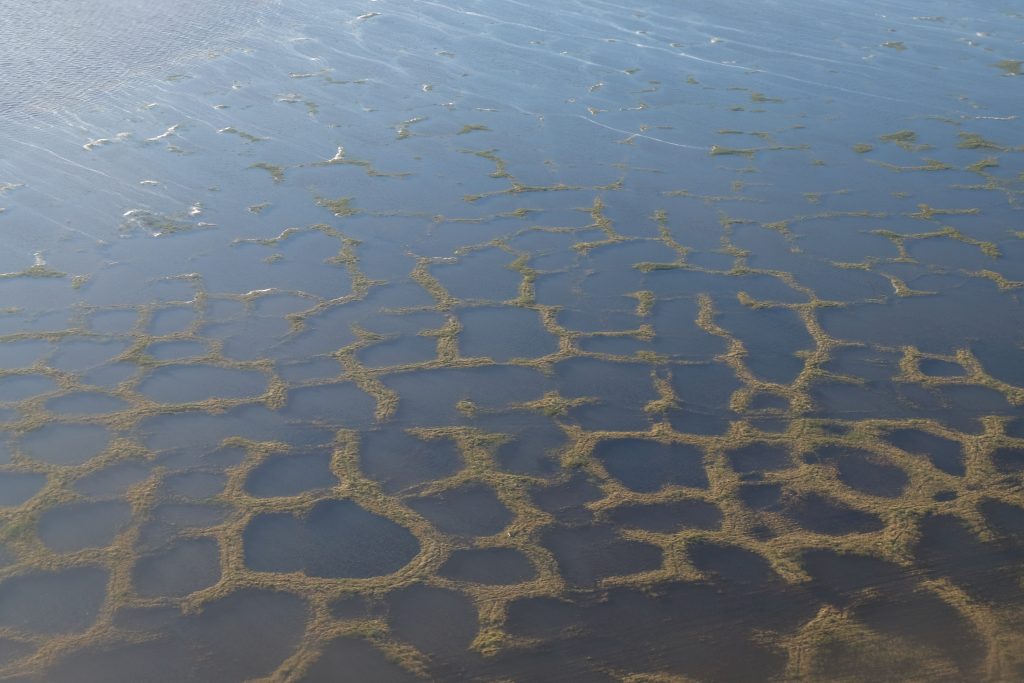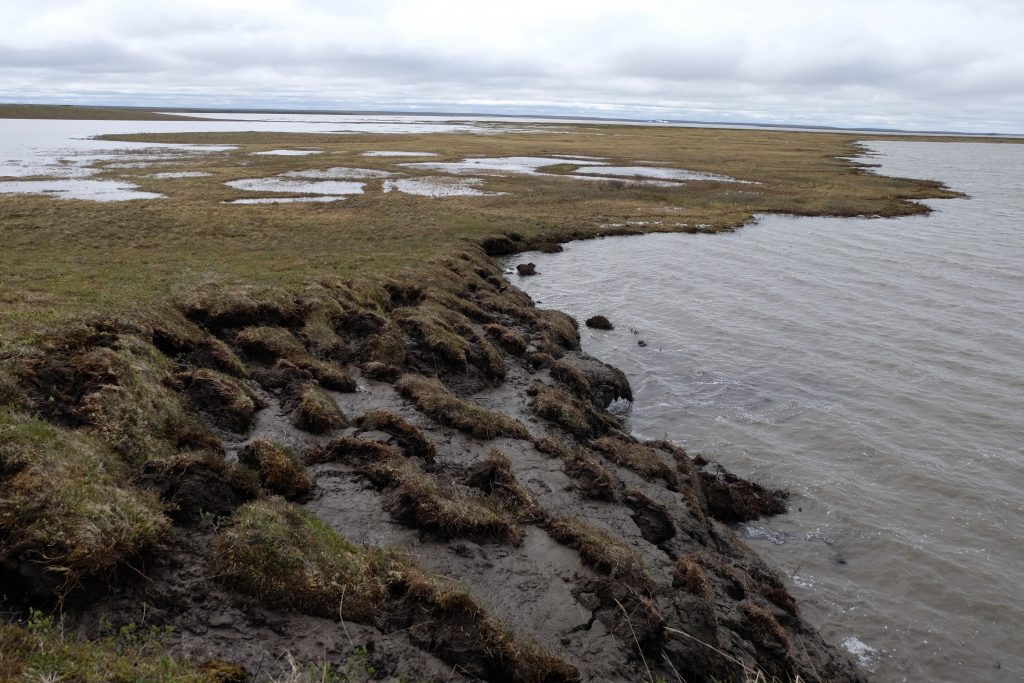‘Permafrost bom’ gaat nog niet af
Vooral jonge bodems in Oost-Siberië vormen momenteel de bron van vrijkomende broeikasgassen, zo toont een nieuw NESSC artikel, gepubliceerd in Nature Communications, aan. Stijgende temperaturen in het noordpoolgebied riskeren het ontdooien van oude, permanent bevroren bodems (permafrost) en het vrijkomen van grote hoeveelheden broeikasgassen die het klimaat verder zouden opwarmen. NESSC wetenschappers aan de Vrije Universiteit Amsterdam en Universiteit Utrecht bestudeerden de zoetwater ecosystemen in Oost-Siberië gedurende de zomer en maten de broeikasgassen die uit oude permafrost bodems vrijkwamen. Hun bevinding laten zien dat de grote meerderheid (80 procent) van de vrijkomende broeikasgassen afkomstig is van jonge bodems, wat betekent dat de er nog geen grote dreiging is van het vrijkomen van broeikasgassen uit de ‘permafrost bom’.

Permanently frozen soils in the Arctic have built up over thousands of years. Presently, they form one of the planet’s largest carbon stores. However, with temperatures in the Arctic region rapidly rising, the thawing of these old soils could in potential release vast amounts of extra greenhouse gases like carbon dioxide and methane. Particularly the risk of permafrost soils releasing more methane, a greenhouse gas far stronger than carbon dioxide, is of a concern, and has been dubbed a ‘permafrost time bomb’.
Freshwater ecosystems in the Arctic, consisting of lakes, rivers and ponds, form a main source where methane is being released. However, it isn’t yet clear how much of the released methane originates from old permafrost soils. NESSC scientists from Vrije Universiteit Amsterdam and Utrecht University studied different freshwater bodies in the East Siberian Arctic to determine the ages of methane, carbon dioxide and organic matter in the water and looking how much of the released carbon was coming from old permafrost.

Present-day soils
At heavily thawing permafrost sites the researchers did find old greenhouse gases. However, the large majority of the released carbon, over 80 percent, was contemporary in age, meaning that it was part of the active biological cycle and coming from present-day soils. The recycling of young plant material therefore seems to dominate the release of greenhouse gases in the East Siberian Arctic.

The results suggest that greenhouse gas emissions from a warming Arctic may not be driven by the thawing of a ‘permafrost bomb’, NESSC researcher Joshua Dean, now at the University of Liverpool, explains. “This, and a recent other study, show that the age of released greenhouse gases is less important than the amount and form of the carbon being released. Methane gas, being such a powerful greenhouse gas, could be an important component of future greenhouse gas emission from this region as the climate warms and the Arctic growing season lengthens. What will be crucial to the ongoing assessment of carbon emissions from the Arctic will be to determine, not just the amount of carbon being released, but in what form it is being released.”
Article:
East Siberian Arctic inland waters emit mostly contemporary carbon
Nature Communications, 2020
Dean, J. F., Meisel, O. H., Martyn Rosco, M., Belelli Marchesini, L., Garnett, M. H., Lenderink, H., van Logtestijn, R., Borges, A. V., Bouillon, S., Lambert, T., Röckmann, T., Maximov, T., Petrov, P., Karsanaev, S., Aerts, R., van Huissteden, J., Vonk, J. E., Dolman, A. J.
https://doi.org/10.1038/s41467-020-15511-6

